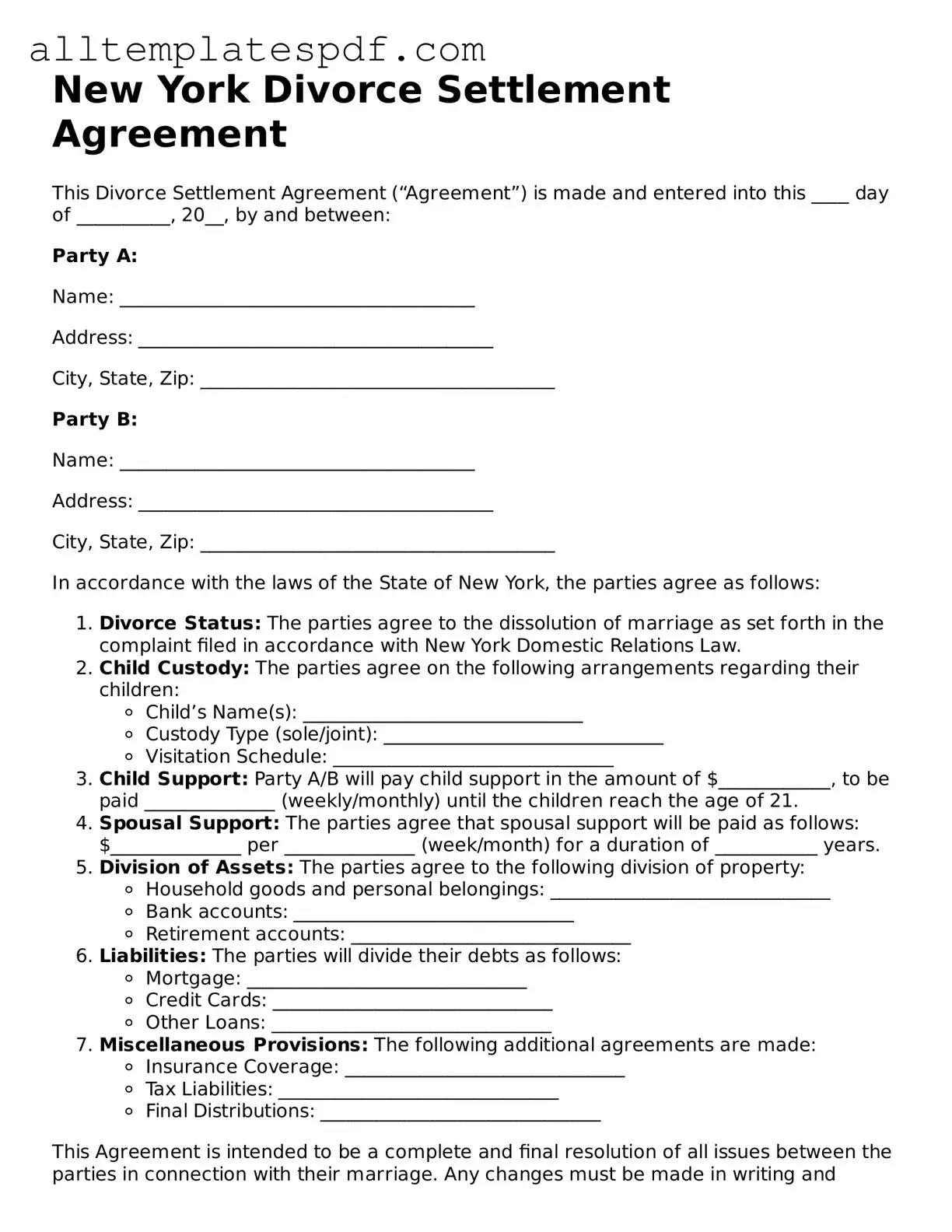Filling out the New York Divorce Settlement Agreement form can be a daunting task, and many individuals make mistakes that can complicate the divorce process. One common error is failing to provide complete and accurate information about assets and debts. When individuals omit details or misstate values, it can lead to disputes later on. It is crucial to list all marital property, including real estate, bank accounts, and personal belongings, to ensure a fair division.
Another frequent mistake involves overlooking the importance of child support and custody arrangements. Parents may not fully understand how to calculate child support obligations, leading to inadequate financial provisions for the child’s needs. Furthermore, vague or ambiguous language regarding custody can create confusion and conflict. Clearly defining custody arrangements and specifying visitation rights can help prevent misunderstandings.
People often underestimate the significance of legal language and formalities in the agreement. While it may seem tempting to use informal language, doing so can render the agreement unenforceable. It is essential to use precise terms and follow the required format to ensure that the document holds up in court. Additionally, failing to have the agreement notarized can also lead to issues; many courts require a notarized signature to validate the document.
Another mistake is neglecting to account for tax implications. Individuals may not consider how the division of assets will affect their tax situation. For instance, transferring retirement accounts can have tax consequences that need to be addressed in the agreement. Consulting with a financial advisor can help clarify these issues and ensure that both parties are aware of potential tax liabilities.
People sometimes rush through the process without fully understanding their rights. This can lead to accepting unfavorable terms simply to expedite the divorce. It is important to take the time to review all aspects of the agreement and seek legal advice if needed. Understanding one’s rights can empower individuals to negotiate more effectively.
Additionally, failing to include a dispute resolution clause can create complications in the future. Without a clear plan for how to handle disagreements that may arise after the divorce, individuals may find themselves back in court. Including a mediation or arbitration clause can provide a structured approach to resolving conflicts without resorting to litigation.
Lastly, many overlook the need for periodic reviews of the agreement. Life circumstances change, and what may have been a fair arrangement at the time of divorce may no longer be suitable years later. Regularly reviewing and updating the agreement ensures that it continues to meet the needs of both parties and their children.
In summary, careful attention to detail is essential when completing the New York Divorce Settlement Agreement form. By avoiding these common mistakes, individuals can create a clearer, more effective agreement that serves the best interests of all parties involved.
